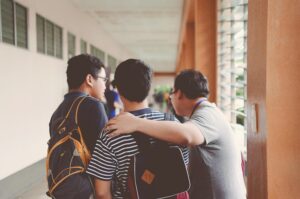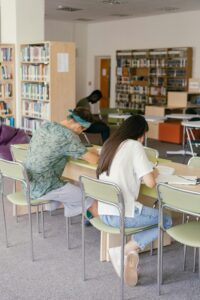|
Title: |
SUSPLUS |
|
Country of implementation: |
Poland; Denmark, Estonia, Germany, France, Spain |
|
Type of the practice: |
Educational project |
|
Type of education (primary, secondary, non-formal): |
Students, pupils in secondary school |
|
Age of participants: |
Undefined |
|
Education form (online, offline, or blended): |
Blended |
|
Link: |
http://susplus.eu/ |
|
The SUSPLUS project facilitated collaboration among eight European universities to develop, implement, and widely disseminate innovative educational materials and methods in sustainable food systems. This initiative aimed to equip students with the necessary knowledge, competences, and skills to support the sector and enhance their employability. The organic food system was presented as a model for increasing overall food production and promoting sustainable consumption. Comprehensive knowledge in various areas of sustainable food system development, not covered in standard university programs, was shared with a broad student community through highly innovative educational tools and methods. These methods were tailored to meet the expectations of European employers, focusing on developing and implementing teaching approaches that enhance education quality and future student employability. MEASURABLE RESULTS: • Guide/booklet on Sustainable Food Systems • E-learning module “Sustainable Food Systems & Diets” • Intensive Study Program “Sustainable Food Systems and Diets” • Educational materials for the intensive study program “Sustainable Food Systems and Diets” • SUSPLUS Small Research Projects Program • Lectures on sustainable food systems delivered by students in schools Analysis: The concept of integrating a Sustainable Food System, including a Sustainable Diet and the Organic Food System, into the curricula and existing study programs of partner universities. |
SWOT ANALYSIS OF CASE STUDY 6:
Strengths (internal factors):
- Different forms and methods of knowledge transfer.
- Reachability for both remote and traditional forms.
- Presentation of content often supported by examples.
- High-quality, international, comprehensive knowledge in various areas of sustainable food systems development.
- Utilization of online and digital resources, making the project accessible to a wide audience.
Weaknesses (internal factors):
- Boring, unattractive website.
- Limited project implementation tied to its financing period.
- Absence of workshops and practical exercises.
- Lack of tools developed by the project to engage stakeholders in its continuation.
Opportunities (external factors):
- Educational materials and tools provided by the SUSPLUS PROJECT can be easily replicated and adapted to different contexts and audiences.
- Enables participants to create an educational process tailored to their needs.
- Promoting an approach tailored to individual needs aligns with the personality profile of Generation Z.
- Education and communication campaigns can empower individuals to make informed choices and actively participate in sustainability initiatives. Encouraging partnerships between institutions such as universities brings together diverse knowledge, resources, and perspectives, potentially leading to advancements in the food management education sector.
- Promoting sustainable food consumption among students and schoolchildren.
- Raising awareness and encouraging behavioral changes towards more sustainable food choices.
- Clear planning, stakeholder involvement, effective communication, and a strategy for managing the SURPLUS PROJECT results in a way that is responsible, transparent, and aligned with the set goals.
Threats (external factors):
1. Limited funding may hinder implementation.
2. Resistance from stakeholders, whether due to lack of awareness or vested interests, can impede progress and hinder the adoption of sustainable practices.
3. Educational resources and tools may not be sufficient to overcome ingrained habits and cultural norms related to food choices.
4. Requires behavioral change, which can be difficult to achieve.
5. Mismanagement of project outputs could lead to unequal access or underutilization of resources by those who need them most.
6. The need for establishing mechanisms or infrastructure for the implementation of the project results. Fair and equitable distribution might be challenging to achieve.
7. The need to involve project partners to prepare applications for funds to continue the project.
|
Some insights from conducted interviews: From students’ perspective: “In my opinion, one of the main advantages of the SUSPLUS project is the fact that it uses many different forms and ways of transferring the knowledge. It allows participants to create an educational process tailored to their needs, better assimilate knowledge, and consolidate it also later. An additional advantage is reaching for both remote and traditional forms.” “By providing targeted information and resources, SUSPLUS can help me develop knowledge and skills related to healthy and sustainable food choices. This program offers capacity-building activities, such as workshops, training sessions and community engagement, to empower individuals and communities to adopt sustainable food practices. It fosters the development of practical nutrition skills and sustainable food systems”. |







